Image caption: An upgraded Delta 4 Heavy rocket and super secret spy satellite roar off pad 37 on June 29, 2012 from Cape Canaveral, Florida. Credit: Jeff Seibert/wired4space.com
Here’s a launch photo gallery showing the blastoff of the NROL-15 top secret intelligence gathering satellite atop a mighty Delta 4 Heavy booster from colleagues with a variety of perspectives on 29 June 2012 from Cape Canaveral, Florida
The spy satellite was lofted to orbit by the United Launch Alliance Delta 4 Heavy booster for the National Reconnaissance Office (NRO).
Sometime in 2014 the first space bound Orion capsule will blastoff atop a Delta 4 Heavy booster.
Delta 4 Heavy rocket and super secret spy satellite roar off pad 37 on June 29, 2012 from Cape Canaveral, Florida. Credit: Jeff Seibert/wired4space.com
……
Jun 29, 2012 Delta 4 Heavy NROL-15 launch photos – Credit: Alan Walters/awaltersphoto.com
……
Delta 4 Heavy rocket with top secret spy satellite thunders off Pad 37 on June 29, 2012 from Cape Canaveral, Florida. Credit: Ken Kremer/kenkremer.com
……
Delta 4 Heavy rocket and super secret spy satellite roar off pad 37 on June 29, 2012 from Cape Canaveral, Florida. Credit: Jeff Seibert/wired4space.com

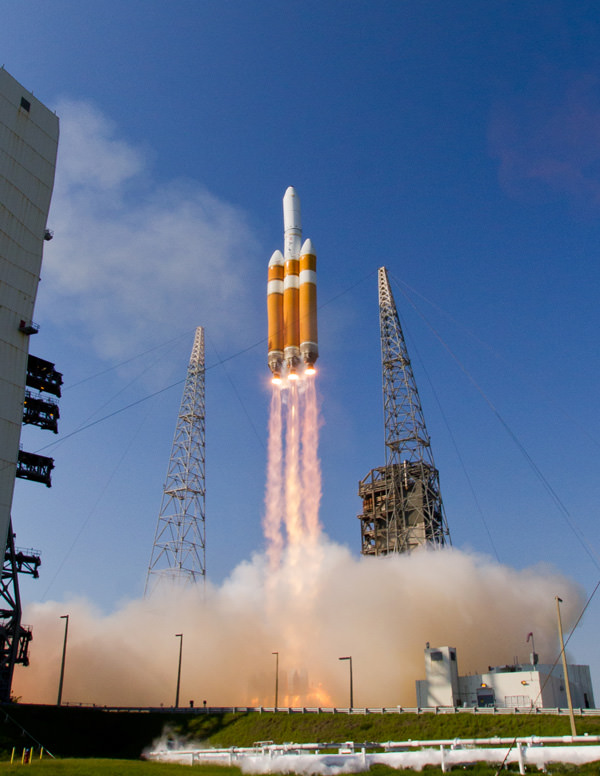
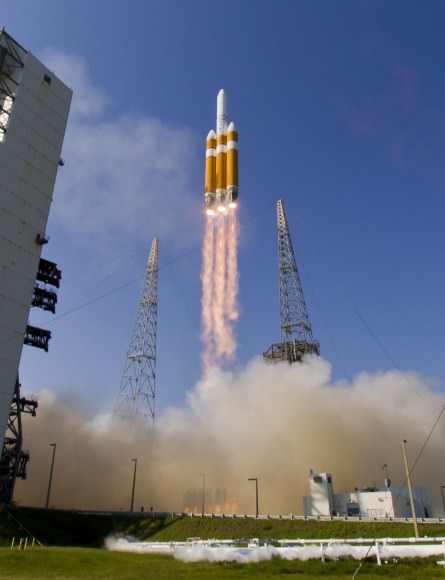
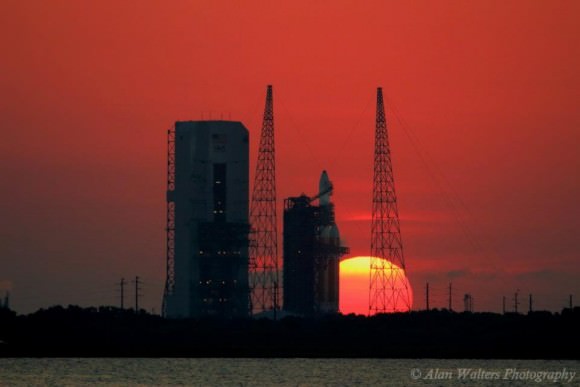
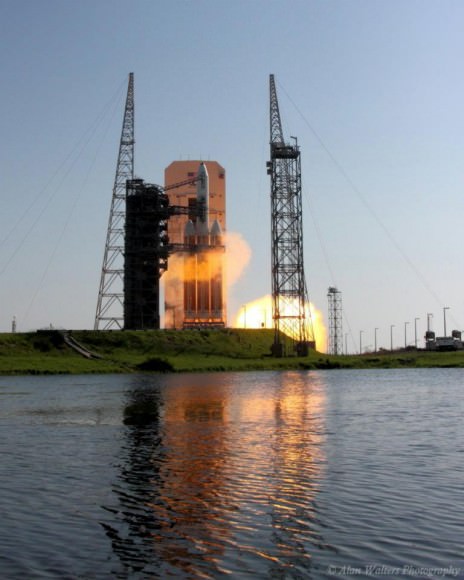
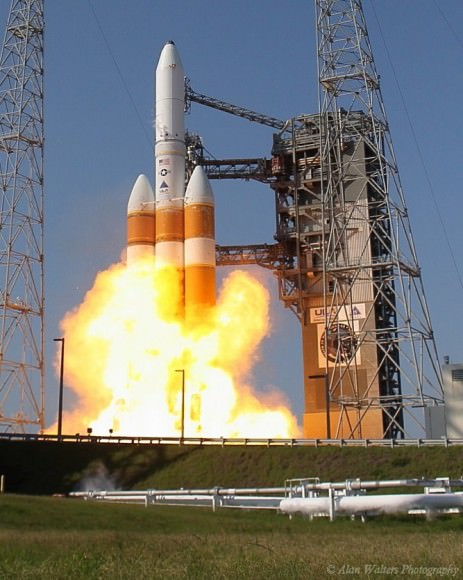
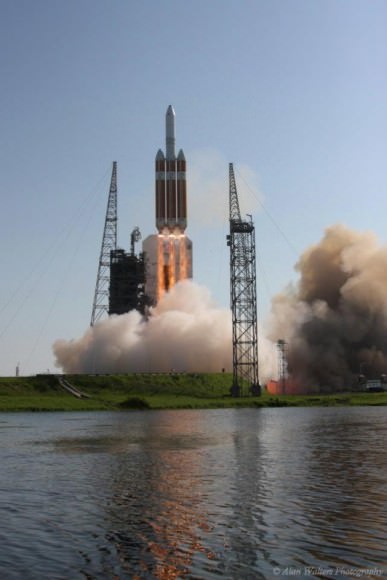
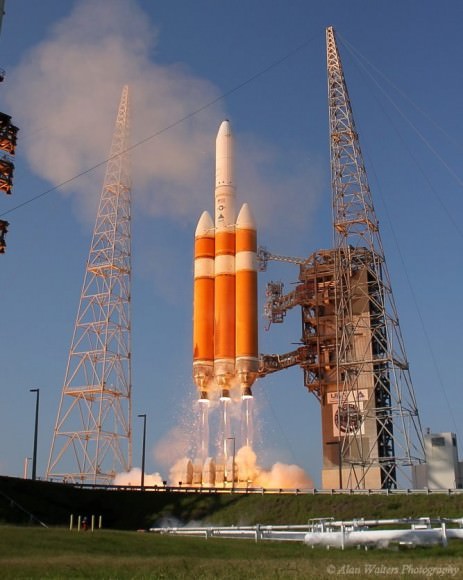
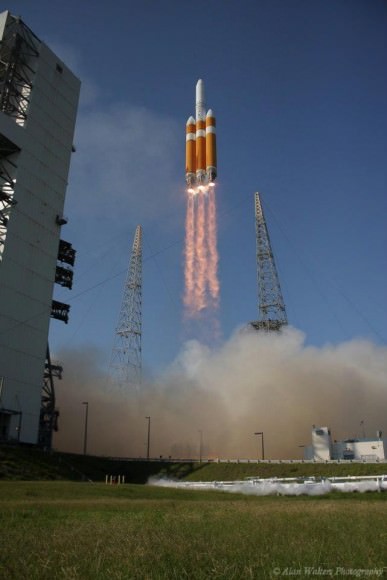

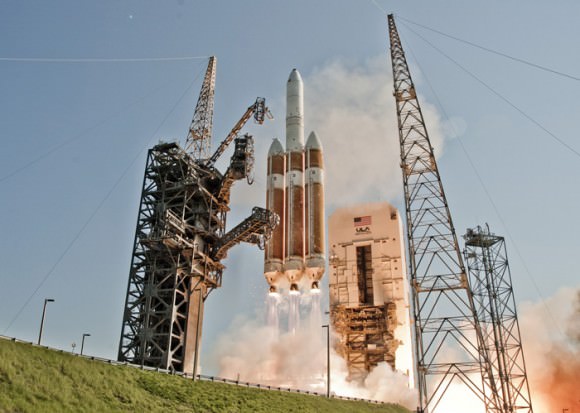
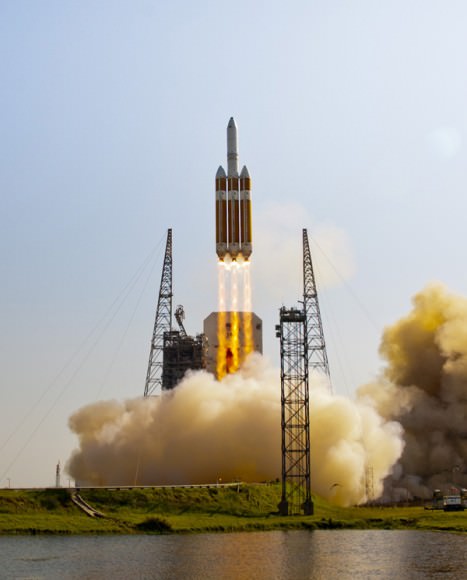
Some of those images are from non-standard angles at odd heights, and it gives them a lightly surreal look. Especially the first picture. I like it:).
The fun side of the story is that the ULA Delta IV, or Atlas V, won’t be manrated by then. They still have to finish their EDS system that was “scheduled to be completed by the end of 2010.”
They are promising to finish earliest by 2014:
“While NASA’s goal is get astronauts to orbit by 2015, ULA President and CEO Michael Gass has stated “I think we need to stretch our goals to have commercial crew service operating by 2014″ and has committed ULA to meet that schedule. Other than the addition of the Emergency Detection System, no major changes are expected to the Atlas V rocket, but ground infrastructure modifications are planned.”
If they launch a mere test vehicle, there isn’t a need to try to meet the “stretched goal” commitment at that time.
This 4+ year delay is funny because you read SpaceX ‘hateboys’ nag about the 2 years between SpaceX COTS1 and 2 launches. A near year delay was also in part due to budget delays from Congress unless I’m mistaken as it happened right then.
Even more funny in a similar comparison, when I hunted the Delta IV manrating down I found out that the demonstration flight press material was funny too. It shows the same speculative growth options as SpaceX mentions (mostly or all outside of the press material I think) and gets clobbered for.
Life isn’t fair. But you would have thought comparisons would be. :-/
Here’s a comparison for you Torbjörn.
On reviewing the launch video clip http://www.youtube.com/watch?v=oxMuxZWtiOU , at 3:25 (60 seconds into the flight), you clearly see, and the commentary clearly states “Good chamber pressure in the port and starboard boosters in the full power mode, good chamber pressure in the central booster in partial power mode”. The idea being to gain lift performance by conserving fuel in the central booster before outer booster separation.
By comparison, the Falcon Heavy has an innovative approach to achieving this. There is an option to cross feed propellant from the side boosters to the central booster’s engines to leave the central booster with a full fuel load after side booster separation.
So which would you say is best?
In any event, thanks for the pictures UT and congratulations to Boeing on the RS-68A powered Delta 4 Heavy.
In fact, Boeing has old papers showing an upgraded Delta IV capable of 50+ mt to LEO. The design employs cross feeding just like the SpaceX Falcon Heavy as well as solid strap-on boosters. Of course, the new RS-68A is indeed an improvement, notice the absence of a plume of fire that chars the tank foam. Though Delta has a long way to go to approach the cost effectiveness and practicality as Atlas V.
Excellent point Peter.
From ULA’s published papers web page there is Phase 2 EELV – An Old Configuration Option with New Relevance to Future Heavy Lift Cargo which seems to have been presented at the American Institute of Aeronautics and Astronautics.
It points out that a proposal for a Delta 4 Heavy on steroids (cross-feed common booster core + GEM60 solids + RS-68A main engines + new upper stage) was wiped from the drawing board when the Constellation Heavy Lifter became flavor of the moment. A situation that prevails now that Boeing is instead the main contractor for the SLS.
Maybe Boeing can look at X-feeds on later variants of the SLS when liquid fuel boosters replace ATK’s solid fuel boosters….till then it would seem the only X-feed heavy in the pipe line is the Falcon Heavy.
Thanks for the tip. I didn’t know Boeing had looked into X-feeding. Cheers.
Awfully photogenic for such a clandestine payload. 😀
A supposedly free and open society launching a super secret spy satellite. Hmmm…
Every government has some legitimate secrets. Do you really want adversaries and enemies to know precisely how well they can be watched and/or listened to from above…?
For those who wonder how something so obvious can be ‘secret,’ the secret isn’t in the fact that it’s done, but exactly how, and how well it’s done. Ask any U-2 or SR-71 pilot…except they’d never tell you.
I’m scrolling around the net, any word when the old shuttles get display in the museums? Be cool to go inside them.